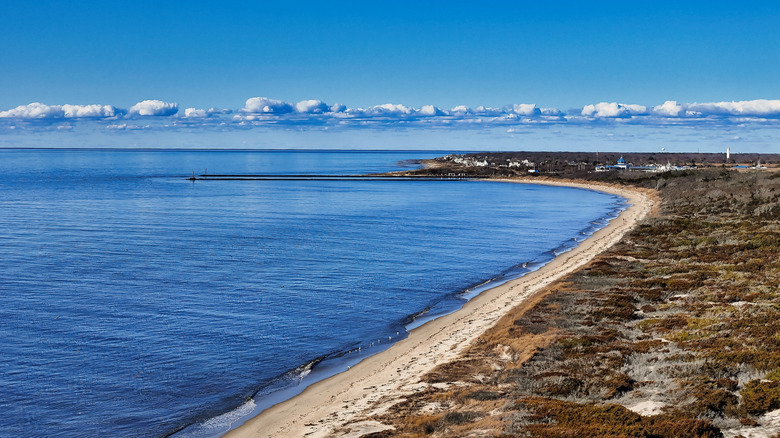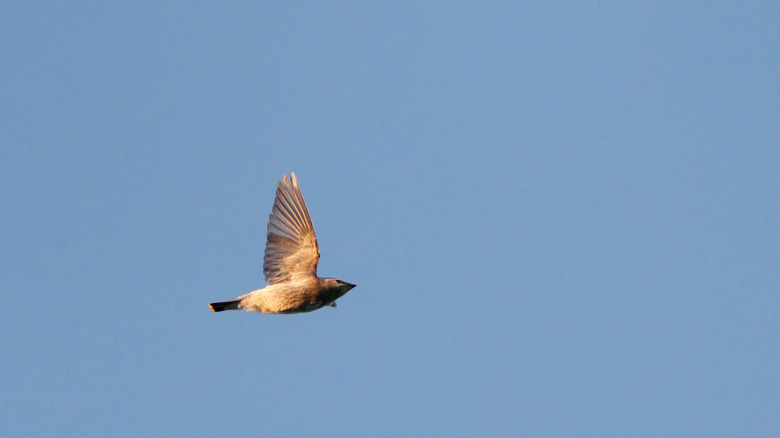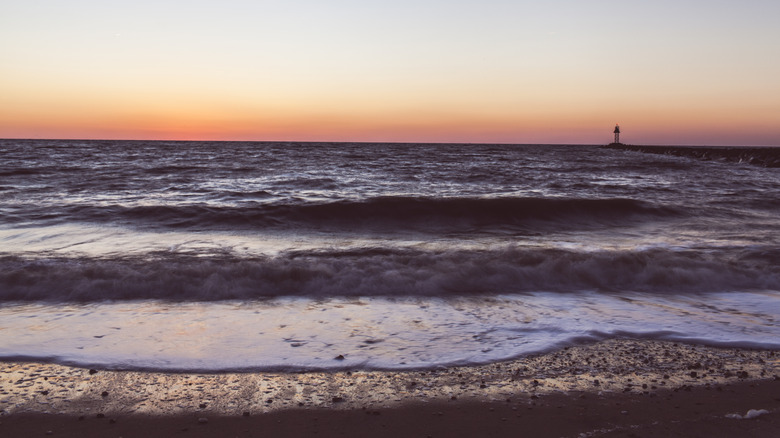One Of Cape May's Best-Kept Secrets Is A Hidden Bayside Beach With Trails And Birdwatching
New Jersey has some of the most beautiful destinations along the East Coast. South Jersey, in particular, has a surprisingly rich collection of lovely coastal towns and pristine Atlantic shoreline, including America's oldest (and friendliest) seaside resort town in Cape May. Cape May also happens to sit next to one of the region's most beautiful hidden treasures. Though it is somewhat overshadowed by the resort parks and modern hotels around it, New Jersey's Higbee Beach Wildlife Management Area is a top showcase of the Garden State's underappreciated natural beauty.
Higbee Beach sits at the bottom tip of South Jersey's Cape May Peninsula, about as far away from New York City and the North Jersey megalopolis as you can get. And though it's less than an hour from the seaside opulence of Atlantic City and the family-friendly entertainment of the Wildwood Boardwalk, Higbee Beach retains its essential natural character. Throughout the wildlife management area, visitors can find abundant dunes, pristine coastal forests, and lush ecosystems, all complemented by the vast blue of the Atlantic.
Of course, with the word "wildlife" right in its name, the Higbee Beach Wildlife Management Area's main claim to fame is its animal residents. Specifically, Higbee Beach is one of the best spots for birdwatching across the entire Eastern Seaboard. Sitting at the heart of one of the world's largest migration routes, Higbee Beach offers abundant opportunities to see both familiar and rare avian species at different times of year. And with a network of nature trails and viewing platforms, the Higbee Beach Wildlife Management Area is a can't-miss destination for both avid birders and casual travelers just looking for a peaceful stroll along the beach.
Higbee Beach is a hidden slice of nature in South Jersey
Though it only contains around 1,100 acres, the Higbee Beach Wildlife Management Area has a strikingly diverse range of habitats. Walking through the park, you'll pass through forests, shrublands, fields, dunes, and coastal ecosystems, all within a short distance of each other. In terms of coastline, Higbee Beach includes about a mile and a half of the Atlantic shoreline at New Jersey's southern tip. This somewhat isolated geography provides a much-needed haven from the large-scale human development you'll find just a few miles away, with several species of rare wildflowers and brambles often found among the park's dunes and coastal woodlands, and undisturbed views of both the Atlantic Ocean and the Delaware Bay. Such a prominent yet delicate environment earned Higbee Beach a place within the New Jersey Wildlife Management Area System, ensuring the protection and preservation of this essential ecosystem in a format that is still visitor-friendly.
The complex synthesis of ecosystems at Higbee Beach is as picturesque as it is scientifically important. However, Higbee Beach's greatest asset is its abundant population of birds. While many of America's best-known spots for birdwatching are famous national parks, lesser-known state-administered preserves like Higbee Beach are often among the top locations for seeing uncommon species in the wild. Higbee Beach gets its reputation as a premier birding spot from its location at the epicenter of the Atlantic Flyway. Stretching from the southern tip of South America all the way to northern Canada, the Atlantic Flyway represents an astounding annual migration route for some of the world's most remarkable birds. Highbee Beach's prime flyway real estate brings in countless birds each year, including hawks, thrashers, warblers, orioles, wrens, buntings, and so many more.
Discover Higbee Beach's wildlife and other natural wonders
As a protected New Jersey state wildlife preserve, the Higbee Beach Wildlife Management Area strikes a perfect balance between natural preservation and visitor amenities. The park's 2 miles of pristine natural trails offer an exceptional escape into a little-seen paradise of coastal New Jersey. If you're up for a beachside hike, the Higbee Beach Loop Trail provides an easy stroll through the park's well-preserved salt marshes, eventually passing along the beach itself. Though the trail tops out at 2.2 miles, its comprehensive tour through Higbee Beach's different ecosystems provides superb opportunities to see all sorts of bird species (be aware, however, that the trail is not well-marked at points, and may have sections with excessive undergrowth that hikers will have to navigate). Unfortunately, about 290 acres of the park will be closed through December 2026 due to the Pond Creek Marsh Restoration Project. However, the rest of Higbee Beach (and its many birds) will still be accessible during this time, so you won't need to worry about missing out on any prime New Jersey birdwatching.
Another major advantage of Higbee Beach is its proximity to many of the other superb nature preserves and modern amenities in the Cape May area. Sitting within the Cape May Peninsula, the Higbee Beach Wildlife Management Area neighbors other outdoor treasures like the scenic Cove Beach, the 200-acre South Cape May Meadows, and the equally biodiverse Cape May National Wildlife Refuge. You can also visit more modern, yet historic, Cape May landmarks, such as the World War II Lookout Tower and the photogenic Cape May Lighthouse. Cape May also bookends the dramatic Bayshore Heritage Scenic Byway, which offers an unforgettable drive past historic villages, serene wetlands, and coastal views.


